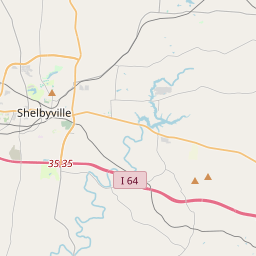Frankfort Chosen as Capital
Historical marker location:






After Kentucky became a state, five commissioners were appointed on June 20, 1792, to choose a location for the state capital. They were John Allen and John Edwards (both from Bourbon Co.), Henry Lee (Mason Co.), Thomas Kennedy (Madison Co.), and Robert Todd (Fayette Co.). A number of communities competed for this honor, but Frankfort won by perseverance and, according to early histories, the offer of Andrew Holmes' log house as capitol for seven years, a number of town lots, £50 worth of locks and hinges, 10 boxes of glass, 1500 pounds of nails, and $3000 in gold.
(Reverse) Frankfort Chosen as Capital - Other contenders for the honor of being selected as the permanent seat of Kentucky state government had offered, as was customary, lists of contributions. These hopeful towns were Legerwood's Bend (Mercer County), Delany's Ferry and Petersburg (Woodford County), Louisville, Lexington, Leestown, and Frankfort. After thorough examination of all sites, the commissioners, following a majority vote, met with the legislature in Lexington on December 5, 1792, and gave their recommendation-that Frankfort was the most suitable site for the state capital
The song "Happy Birthday to You" was written by two sisters, Mildred and Patty Hill, who were both born in Kentucky.
In the early years of its history, Franklin County played a significant role in the development of Kentucky as a state. It served as the temporary capital of Kentucky from 1792 to 1794, before the capital was moved permanently to the current location of Frankfort. The county has always maintained a close relationship with Frankfort, with many government buildings and offices located in Franklin County.
The development of the bourbon industry in the 19th century also played a vital role in the history of Franklin County. The county was home to several distilleries, including the famous Buffalo Trace Distillery, which is one of the oldest operating distilleries in the United States. With its fertile soil and ideal climate, Franklin County became known as the "Bourbon County" of Kentucky, producing some of the finest bourbon in the nation.
In the late 19th and early 20th centuries, Franklin County experienced significant growth and development. The construction of railways and the expansion of industry brought economic prosperity to the area. The county became known for its manufacturing and processing industries, including tobacco, textiles, and automotive parts. Today, Franklin County continues to be an important center of commerce and industry in Kentucky, while also preserving its rich history and cultural heritage.
Franklin County Timeline
This timeline provides a condensed summary of the historical journey of Franklin County, Kentucky.
- 1785: Franklin County is officially established on December 14.
- 1792: Kentucky becomes the 15th state, with Franklin County as one of its original counties.
- 1794: The town of Frankfort is officially established as the county seat.
- 1810: The first state capitol building is completed in Frankfort.
- 1839: The Old State Capitol building, now a historic site, is completed.
- 1861: During the American Civil War, Frankfort serves as the temporary capital of the Confederate government of Kentucky.
- 1865: The Old Governor's Mansion, now a museum, is completed.
- 1909: The new Kentucky State Capitol building is completed.
- 1936: The Forks of Elkhorn Baptist Church, established in 1783, is added to the National Register of Historic Places.
- 1984: Buffalo Trace Distillery, one of the oldest continuously operating distilleries in the United States, is added to the National Register of Historic Places.